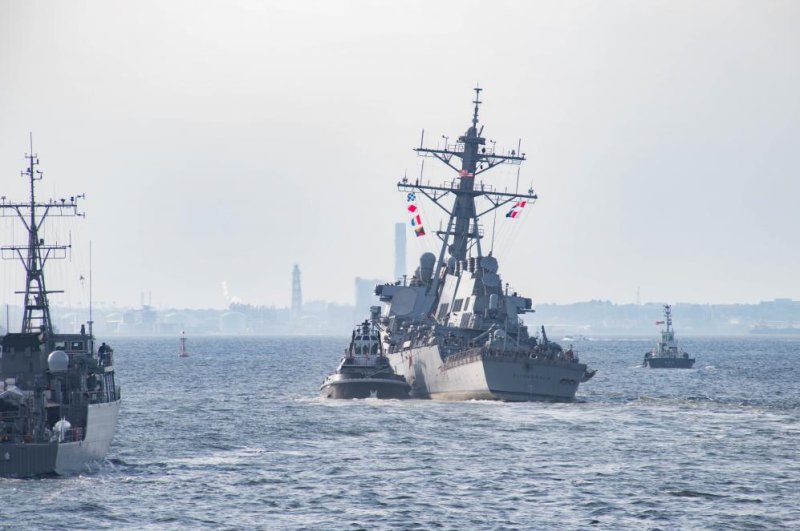The USS Fitzgerald is seen returning to port at Yokosuka, Japan, follwing a collison with a cargo vessel in June. U.S. Navy photo
Aug. 9 (UPI) -- The U.S. Navy has issued a contract proposal for transporting the USS Fitzgerald back to the United States after it collided with a Filipino flagged cargo ship off the coast of Japan.
The June 17 incident, which resulted in the death of seven sailors, is still under investigation by the Navy.
While transiting to a base at Yokosuka, Japan, the vessel was struck by the ACX Crystal container ship, smashing in its hull and flooding a mechanical room and several sleeping compartments. The collision occurred in the middle of the night in one of the busiest shipping lanes in the world.
Retired Vice Adm. Peter Daly, CEO of the U.S Naval Institute, told UPI that lifting and transporting a destroyer is an extremely complicated process and relies on private contractors.
"Bringing a damaged ship back is a very complex task because you've got to make sure the ship is ready to go, and then you have to decide which method, which mode you're going to use for it," Daly said.
The Navy issued a proposal last week through the Military Sealift Command soliciting contractors to lift the ship and bring it back.
"It's a very involved process because you first have to patch the ship, make sure it's structurally sound," Daly said. "You have to get the lifting ship there. Then they block out blocks, just like you're bringing a ship into a dry dock, they put the blocks on the lifting vessels and they float it on to that vessel and then they lift it up out of the water and they bring it back. It's quite a process."
Lifting a ship involves smaller vessels using inflatable devices to raise the destroyer and place it on the carrier, similar to a flatbed truck carrying a car.
Modern precedents for transporting damaged ships are rare. In the last few decades only the USS Cole and the USS Samuel B. Roberts have been transported this way following direct enemy action.
The Cole was struck by an Al-Qaeda linked suicide vessel while docked in Yemen in 2000.
The Samuel B. Roberts hit a mine laid by Iran in 1988, sparking U.S. reprisals with Operation Praying Mantis.
"What they basically do is these ships are built to sink down, to balance down in the water and then they take small tugboats and they place the damaged ship over the top and then they debalance and literally come up and lift it out of the water. And instead of a ship going into a dry dock where you drain the water out of the dry dock and the ship sits down on the blocks, the blocks are on the heavy lift ship and they debalance and they bring it up to the vessel that they're going to lift and literally lift it out of the water," Daly explained to UPI in a telephone interview.
There are two shipyard in the U.S. that can construct Arleigh Burke-class destroyers run by Huntington Ingalls and Bath Iron Works, but West Coast or Hawaii public shipyards are also options.
"Even though it's not decided, I think that the people that built it have the edge and it's a Bath-built ship," Daly said. "The expertise is there to make this happen, without any heroics."















